

How to buy Pacru
What & why
Pacru, Shacru
& Azacru?
News & Events
Play on computer
Contact
Home

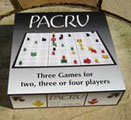
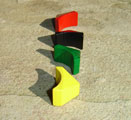
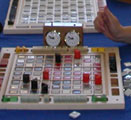
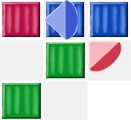
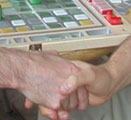

|

|
How to buy Pacru |
What & why
|
News & Events |
Play on computer |
Contact |
Home |

|

|

|

|

|

|
WHAT & WHY: PACRU, SHACRU & AZACRU: History |
||||||
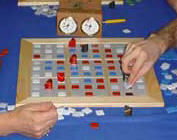 The prototype boards were used in the first two World Championships held at the UK Mind Sports Olympics (MSO), which was very conveniently situated in Manchester at the time (2003, 2004). Mike had been encouraged to take the game to the event by Alain Dekker, then living in Manchester, who was to become the first Pacru champion. The first manufactured Pacru board (the 101 series - with '101' cut into the wood veneer lid) was produced in the summer of 2004 and was not ready until after the MSO. It made its debut at the Essen Games Fair in Germany October 2004 where despite its relatively high price (considerably over both 100 and E150) and no previous publicity a number of copies were sold. Most visitors to the stand played Shacru since it the could be explained very quickly and a game commenced.
The prototype boards were used in the first two World Championships held at the UK Mind Sports Olympics (MSO), which was very conveniently situated in Manchester at the time (2003, 2004). Mike had been encouraged to take the game to the event by Alain Dekker, then living in Manchester, who was to become the first Pacru champion. The first manufactured Pacru board (the 101 series - with '101' cut into the wood veneer lid) was produced in the summer of 2004 and was not ready until after the MSO. It made its debut at the Essen Games Fair in Germany October 2004 where despite its relatively high price (considerably over both 100 and E150) and no previous publicity a number of copies were sold. Most visitors to the stand played Shacru since it the could be explained very quickly and a game commenced.